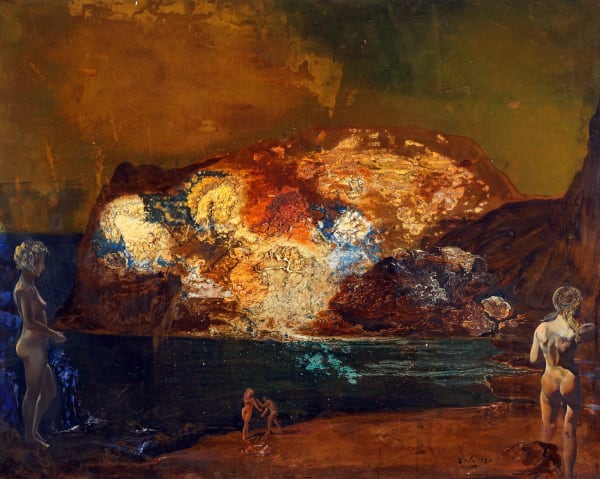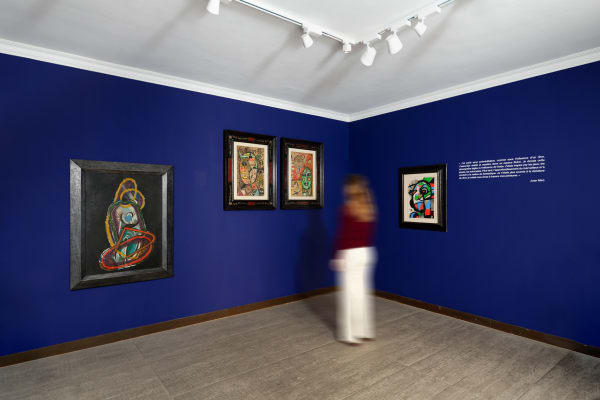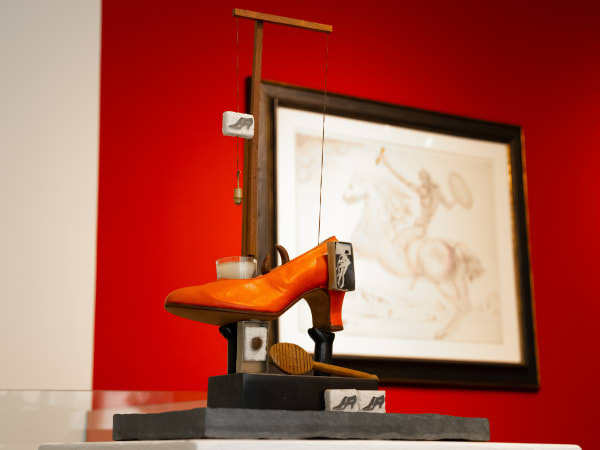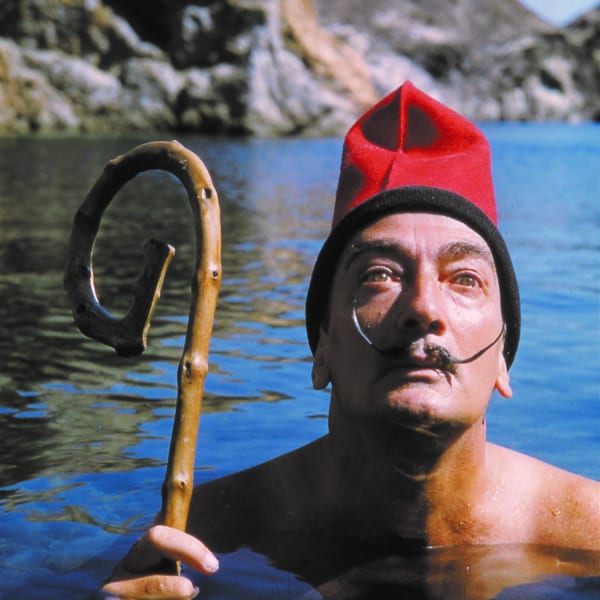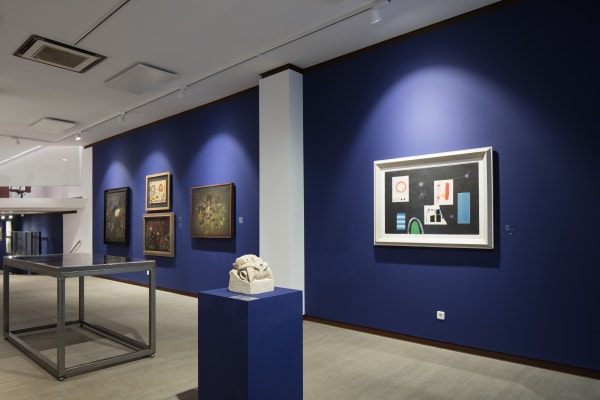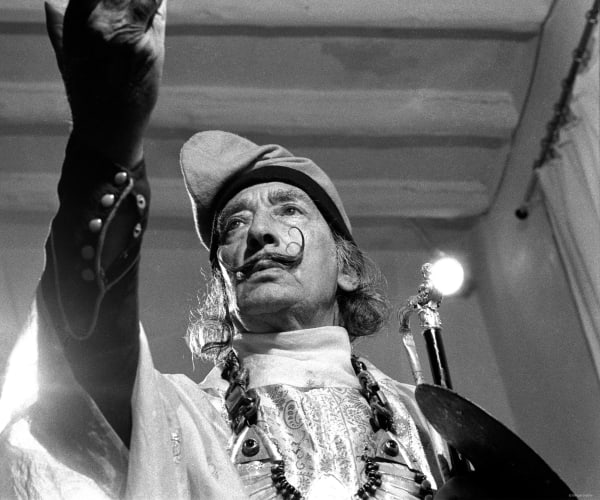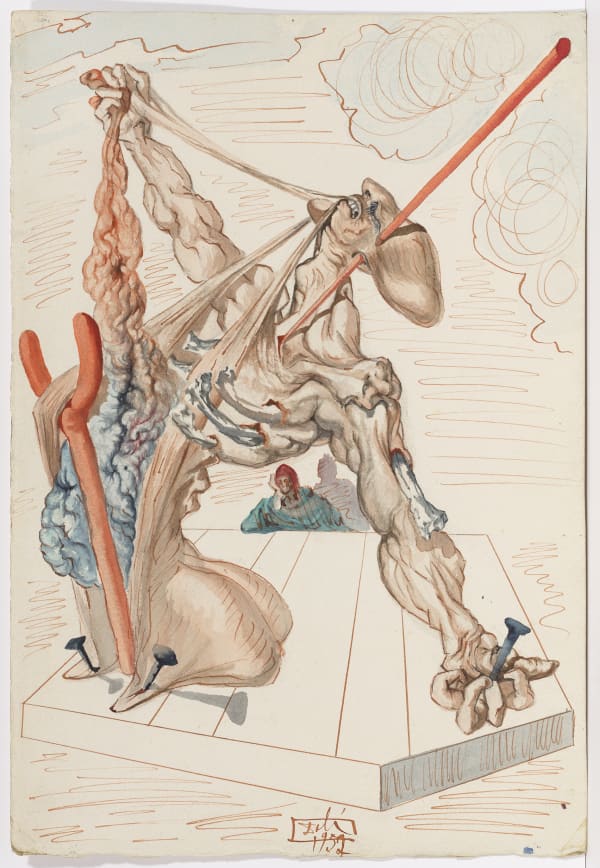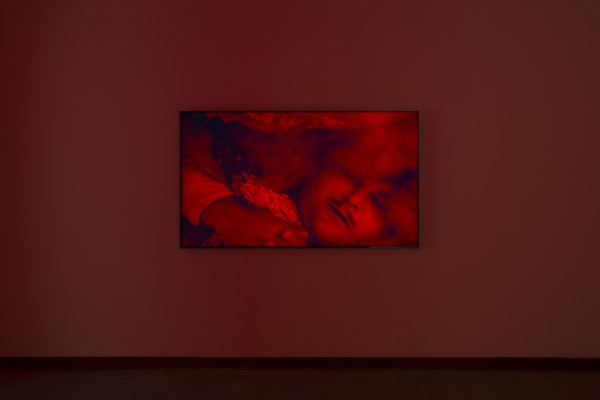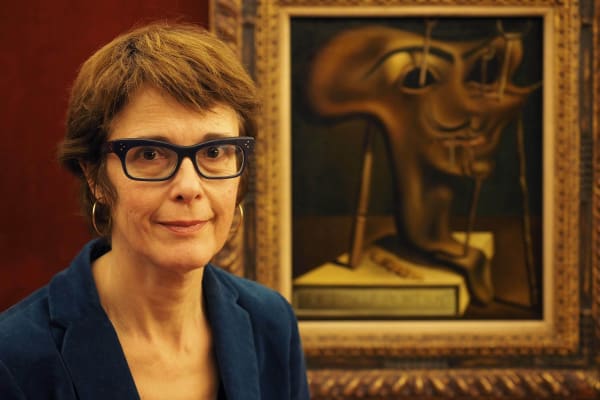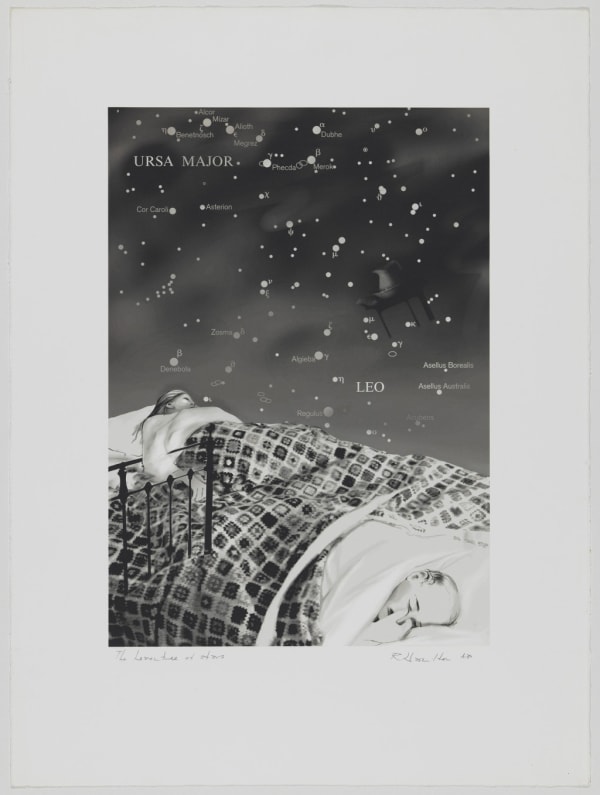Salvador Dalí Figueres, 1904 -1989
"You have to create confusion systematically, it sets creativity free. Everything that is contradictory creates life."
- Salvador Dalí
Salvador Dalí, was a renowned Surrealist artist whose eccentricity and boundless creativity left an indelible mark on the art world. Known for his flamboyant personality and distinctive mustache, Dalí's works transcended traditional artistic boundaries, encompassing painting, sculpture, film, and even writing. His vivid and dreamlike imagery, filled with melting clocks, bizarre landscapes, and distorted figures, reflected his fascination with the unconscious mind and the irrational. Dalí's relentless pursuit of individuality and shock value made him a prominent figure within the Surrealist movement, showcasing his ability to merge reality with the fantastical. With his technical mastery, Dalí created a unique artistic universe that continues to captivate audiences worldwide, solidifying his place as one of the most influential artists of the 20th century.
-

Au-delà de l'horizon
Paris 24 Apr - 24 Jun 2025In this exhibition, the act of looking—of casting one’s gaze beyond the present moment—becomes a quest for something that transcends us to show a personal vision of the universe. The...Read more -

RADICALLY UNIQUE, RADICALLY DIFFERENT
Barcelona 21 Nov 2024 - 15 Feb 2025If we champion difference rather than homogeneity, the 20th century appears to be a sequence of irreconcilable personalities. So unique that nothing links them. We could say that the systematic...Read more -

RÊVE. SURRÉALISME ET RÉVOLTE DE L'ESPRIT
PARIS 25 Apr - 5 Jul 2024Humanity’s deep-rooted fascination for dreams experienced a turning point at the beginning of the 20th century after the publication of The Interpretation of Dreams, by Sigmund Freud (1900), a fundamental...Read more -

Dalí. Ultralocal / Ultraglobal
PARIS 28 Mar - 28 May 2023With the collaboration of Chus Martínez, this exhibition presents a selection of six works rediscovering Salvador Dalí’s artistic universe in the light of two aspects which appear to be difficult...Read more
-

Dalí. Ultralocal / Ultraglobal
BARCELONA 15 Sep - 17 Nov 2022Mayoral presents a solo exhibition devoted to Salvador Dalí (Figueres, 1904 – 1989) and containing a careful selection of 28 works by the artist. The pieces bear witness to his...Read more -

The Space of Dreams
BARCELONA 12 Sep 2017 - 5 Jan 2018Through an accurate selection of works of art, the exhibition shows the importance that the dream has had as a constructor of the artistic language of the 20th century to...Read more -

The Space of Dreams
CADAQUÉS 21 Jul - 15 Aug 2017Through an accurate selection of works of art, the exhibition shows the importance that the dream has had as a constructor of the artistic language of the 20th century to...Read more -

Dalí. Master at Metamorphoses
BARCELONA 1 Oct 2015 - 21 Feb 2016Mayoral Galeria d’Art presents an exceptional exhibition 'Dalí. Master at metamorphoses' by the artist Salvador Dalí in Barcelona. There are shown a selection of paintings, watercolours, collages, drawings and sculptures....Read more
-

ART BASEL
JUNE 13 - 16, 2024 2024Paperback, 50 pagesRead more
Publisher: Mayoral Investigació
Dimensions: 29.8 x 21 x 0.5 cm -

The Space of Dreams
2017Hardcover, 182 pagesRead more
Publisher: Mayoral Investigació
Dimensions: 16 x 22 cm -
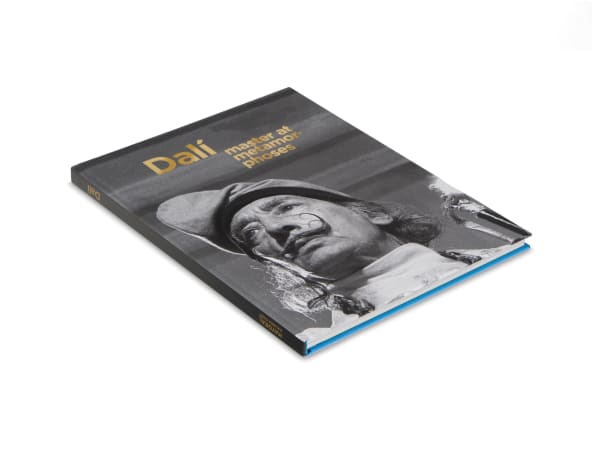
Dalí
Master at metamorphoses 2015Hardcover, 119 pagesRead more
Publisher: Mayoral Investigació
Dimensions: 31.7 x 24.5 cm -
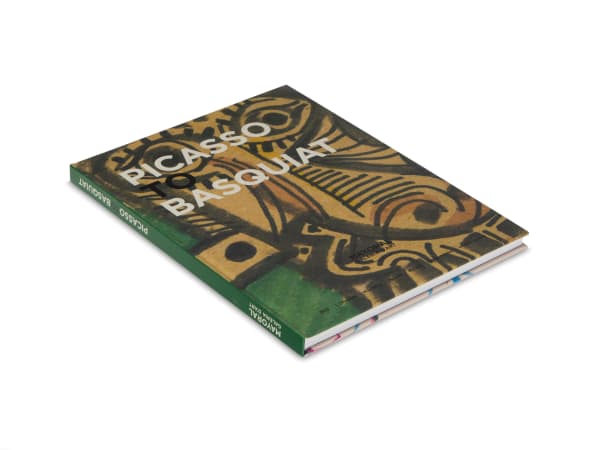
Picasso to Basquiat
2013Hardcover, 135 pagesRead more
Publisher: Mayoral Investigació
Dimensions: 31.7 x 24 cm
-

La Monnaie vivante
What can a body do? If everything is reduced to mere merchandise, how can we be a body that does not put exchange value before use value?. Text by Pedro G. Romero September 15, 2025La monnaie vivante is the title of an essay and a series of performative and photographic works promoted by Pierre Klossowski in 1970. Michel Foucault...Read more -

Radically unique, radically different
Carles Guerra presents a great show that mixes the 20th and 21st centuries, with the occasion of the 35th anniversary of the Galeria Mayoral November 18, 2024Catalan version Spanish version Galeria Mayoral is celebrating 35 years devoted to modern and contemporary art. The brilliant artists from the most iconic avant-garde share...Read more -

Dalí and the epigenesis | Chus Martínez
Chus Martínez talks about Salvador Dalí on the ocassion of the exhibition "Dalí. Ultralocal / Ultraglobal" at Galeria Mayoral, Barcelona-Paris September 5, 2022Dalí, Salvador Dalí, post-war artist, spanish avantgardesRead more -

SALVADOR DALÍ: THE ATTITUDES OF THE DREAM
A text by Montse Aguer, Museus Dalí director September 12, 2017We must bear in mind that Dalí, we can say quite categorically, is the most popular of the surrealist painters and that he has managed...Read more -

Changer La Vie
A text by Albert Serra July 21, 2017The night is the door to true life, that full life in which the impossible rules and death does not impose its law. It is...Read more -

Artistic Dreams
Llucià Homs in conversation with Hans Ulrich Obrist regarding Sogni/Dreams project Basel July 21, 2017After a few attempts to meet with Hans Ulrich Obrist in London, we finally do so during Art Basel, in one of the terraces of...Read more -

Joan Miró: Dreaming While Awake
Rosa Maria Malet talks about "Surrealism and the Dream" July 21, 2017[Excerpts from the paper given at the Surrealism and the Dream international congress held at the Museo Thyssen-Bornemisza on 8 and 9 October 2013] “I...Read more



